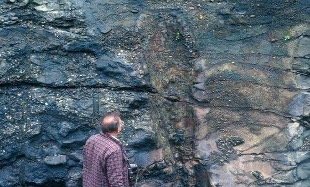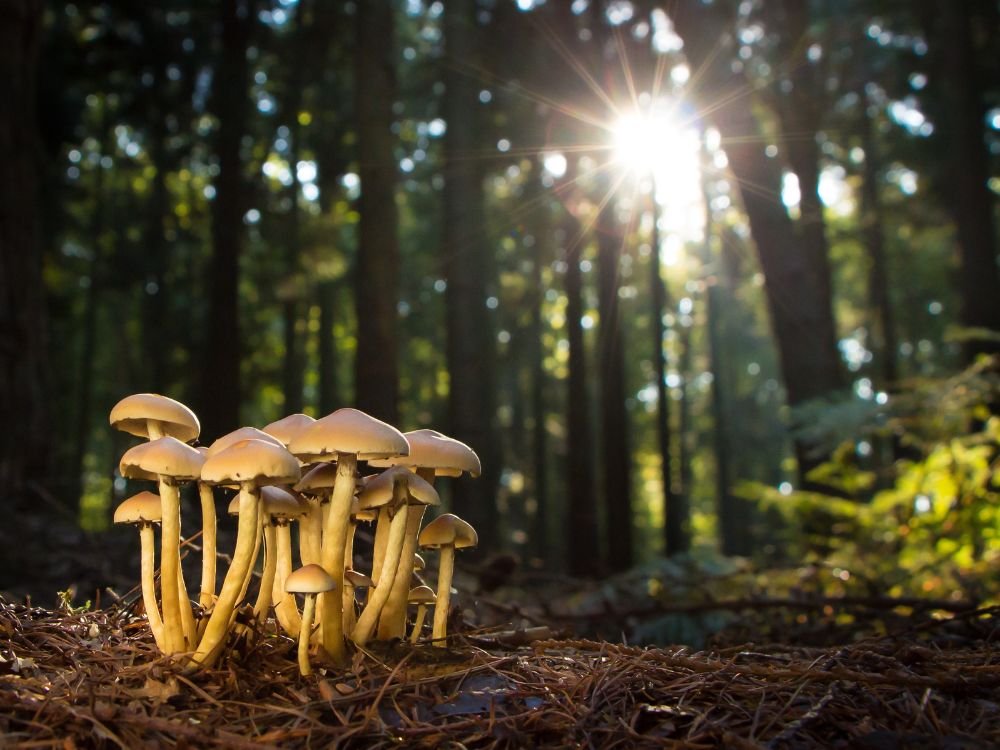Dawn of time
Since the dawn of life, fungi have inhabited our wondrous planet earth. Resting quietly upon the surface, seeping through the cracks of the once prehistoric landscape, fungi, neither animal nor plant, would soon play a vital role of the life on earth’s survival.
Reaching up towards the stars, these organisms once began in aquatic environments around 1.5 billion years ago. Attracted to the earth’s early greenness, they likely began as forms of algae, one of the first living organisms to flourish on land.
How they achieved this transition is still relatively unknown to science, considering this occurred somewhat 460-500 million years ago, it’s no wonder we currently lack the data to truly understand how. This begs the question that if there is still so much, we don’t know about fungi, how is it that they are so crucial to our own survival as a species?
Symbiotic Bonds
As fungi continued to evolve, forming what’s known as symbiotic bonds with early plant life, they quickly conquered the terrestrial world. Teaming up with plants to exchange carbon and oxygen, this helped shape the planet’s atmosphere to what we know it as today and making it possible for more advanced forms of life to flourish.
The way this works is key to understanding how fungi are a key component in regulating the air we and animals breathe. It is often taught that it is just the trees and plants which make it possible for us to inhale and exhale oxygen, but what is otherwise overlooked is that without fungi, plant life would lack fundamental nutrients like phosphorus, which is essential for photosynthesis which is the way plants convert carbon dioxide to oxygen.
The fascinating way that this is achieved occurs within the soil, through vast underground networks appearing as tendrils, in which fungi supply plants with minerals such as phosphorus and nitrogen. In return, the fungi receive sugars from the plants, essential for their own survival. See, even fungi have a sweet tooth… so to speak. Without sufficient levels of phosphorus, plants would have significantly reduced levels of photosynthetic activity, leading to a dramatic reduction in oxygen released into the atmosphere, destroying the majority if not all of life. Fungi are quite literally the bridge between life and death as we know it.
Fungi & Humans Common Ancestor
Interestingly, fungi are closer related to humans than they are to plants. We share a common ancestor, which in itself is wild. An example would be the way that we both rely on oxygen to respirate, to convert food into energy in the form of sugar, as mentioned above. Ultimately, we both breathe oxygen, and dispose of carbon dioxide as a byproduct as part of this aerobic process. This is impactful on a micro level, enabling cellular functions to operate correctly for both life forms, fungi and humans.
Just like humans, animal DNA has also shown similarities when compared to fungi. Some say this is where the ‘meaty’ flavour is derived from. So, for those of you who are vegan, perhaps mushrooms are a suitable alternative!
Prehistoric Fungi
It’s amazing to think of the total resilience and perseverance that fungi have withstood to enable life to begin and continue to survive on earth. They have demonstrated to us that to thrive, we must work together, not only with each other, but of our ancient ancestors of which we all came from. These are the very organisms which make it possible to enjoy the things which we so often take for granted, like the air we breathe and the foods we eat. Did you ever consider a mushroom to be an ally? Perhaps you will think differently the next time you spot one, peeking out through the foliage during a forest walk, or laid out on a supermarket shelf.

(Above) a fossil of what we have now identified as the ‘Prototaxite’, a prehistoric organism which went extinct around an estimated 350 million years ago. At first these were thought to come from the same gene pool as fungi, but recent studies have shown they are not in fact related. This just goes to show us that our understanding of our planets history is forever changing as our understanding evolves. Will we ever be able to truly piece together the mysteries of our past? (image by Carol Hotton)
